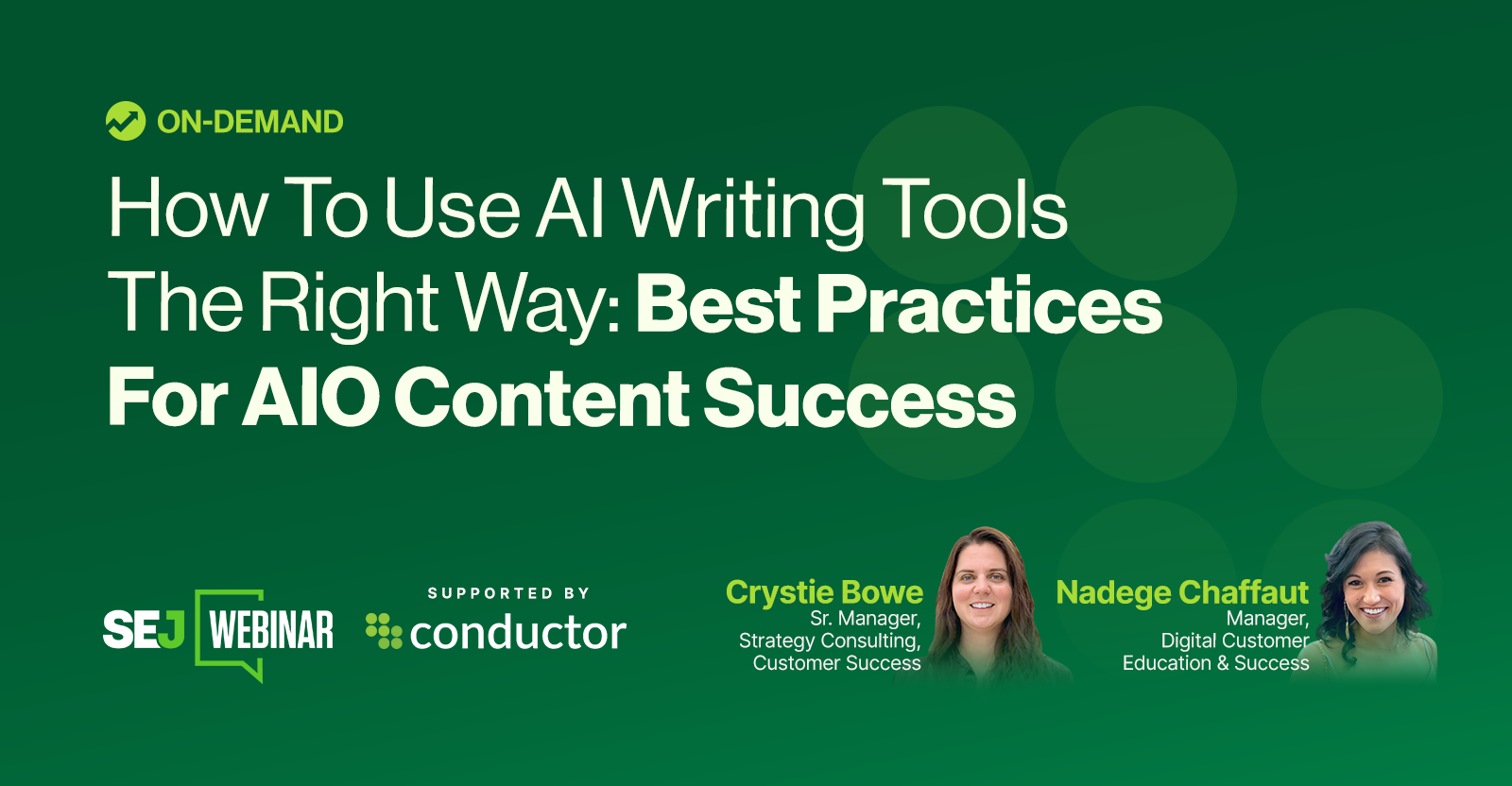
1) AI Overviews & Passage Ranking: Win “snippet-level” visibility
“We’re seeing that AIOs… are pulling pieces of articles directly into the search result… which is why you’re getting a lot of those zero click results.”
“That’s just another vote for specificity… the more specifically we can write about our customer issues and pain points, the more likely it is that our results are going to surface as snippets in things like AIOs or LLMs.”
See how to map customer issues into AIO‑winning passages. Watch on‑demand. →
2) Operationalizing E‑E‑A‑T with Authorship & Schema: Make expertise machine-verifiable
“Have authors establish author pages, use article schema, connect your authors to your brand via things like same as schema, via things like LinkedIn profiles… and ensure you’re calling out authors as part of your company and as part of your brand voice.”
“When we think about the author, these are the types of things that Google’s trying to answer: Who is this person?… Are they an expert in this industry? Why are they an expert on this topic? Why should we rank this piece of content over this one that seems to be similar?”
“If you’ve been published across different places… that’s another great way to kind of seed LLMs with additional information about your expertise. And then of course, author schema—just sort of like the cherry on top.”
See how to build high‑trust author pages, connect sameAs, and add Author schema; watch on‑demand. →
3) Evolving Content KPIs + Topic Clustering: Measure what matters now
“Ensure that you have a good information architecture, good content clusters… shows the interconnectedness between the content themes… and then finally, ensuring that you’re tracking performance. We need to make sure that we’re measuring our content now.”
“There’s new KPIs we have to think about—mentions, citations… moving away from our old way of looking at just traffic all the time or rankings all the time.”
See how to track mentions and map clusters to searcher intent. Watch on‑demand. →
4) Prompt Engineering (CRAFTS) + Human-in-the-Loop: Scale quality without generic output
“You cannot just expect AI to generate a perfect piece of content without any editing… the more that a human is in the loop—and not just any human, but a human who actually knows their stuff—expertise is not going away.”
“Vague prompts… lead to generic off‑brand content.”
“The framework that I like to use is something called CRAFTS… C is going to be for context… and those things can be templatized… you use it in every prompt.”
“For SEO perspective, you can list primary and secondary keywords… tell the AI to avoid using clichés… provide examples… ‘look at this amazing blog post’… use this as your reference.”
See how to apply CRAFTS prompts with a 2‑step SME review. Watch on‑demand. →
5) Technical Foundations that Still Move the Needle: IA, crawlability, and clarity
“Technical health is still important… the healthier a site is from a technical standpoint, the more those individual URLs get cited… Of course, schema is really important right now… Internal linking and discoverability [are] still super important. Trim the fat from your site, reduce your crawl bloat.”
“Typically cited pages are three clicks or less from the homepage… don’t bury important content too deep within your site architecture… leverage breadcrumbs… [and] the basics… Title tags, good URLs, heading tags… will continue to be important.”
See how to run a 10‑minute tech audit for depth, crawl, and breadcrumbs; watch on‑demand. →
View the slides below or check out the full webinar for all the details.
Join Us For Our Next Webinar!
The Data Reveals: How AI Wins More Customers & Supercharges Your Business
Can’t make it live? Register anyway! We’ll send you the recording!
